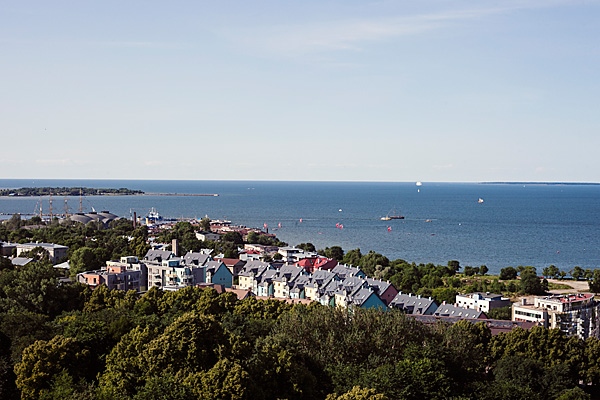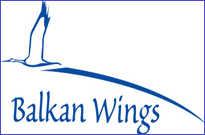Estonia: Estonia Tourism Profile
2015/03/11
Travel and tourism still seeing positive growth
Travel and tourism continued to grow in 2012, although the level of increase was significantly lower than during the two previous years at the same time as increases in arrivals were rather extensive. However there was a fall in domestic tourism, which took a toll during the recession as people cut back on leisure holidays. Towards the end of the review period, the country started to promote holidays in Estonia for Estonians and most travel agencies offered a large selection of packages targeted at the local consumer to try and reverse the decline.
Heavy competition leads to increase in request for quality
Heavy competition between the numerous travel and tourism companies has led to fast market development, where only those who provide a high-quality service succeed. People have come to appreciate a high level of service and a lot of companies which are unable to provide this struggle to maintain their business. In addition to quality, the price-sensitive consumer continues to price appropriate offers and a good quality/price relationship. These developments have resulted in the bankruptcy of certain smaller travel agencies.
Estonia continues to develop travel and tourism
Travel and tourism is seen as an integral part of the country’s economy and thus the development of this industry is constantly an significant topic. The number of events organised in Estonia continues to grow, as does the number of attractions. In 2012, several new tourist attractions were opened, inclunding a theme park in Rakvere Fort, an adventure park in Kiviõli, the National Sea Museum, and the renovated TV Tower.
Attracting tourists from Asia Pacific is a new priority
As the number of tourists from Asia Pacific is still rather low, despite Estonia generating interest in nations such as China, the country is looking to attract tourists from unsaturated markets in the region. As Chinese tourists are very interested in shopping in addition to the cultural values of a country, Estonia is prioritising the availability of retail channels that would attract these consumers.
Travel and tourism expected to grow at a marginal pace
Travel and tourism in Estonia is expected to remain on a path of positive increase, despite the fact that Estonia still lacks convenient flight connections to several European destinations, such as Germany, southern Europe and the UK. In addition, the low-cost company Ryanair has shut down seven routes departing from Tallinn for the winter season, and the only local airline, Estonian Air, is struggling to maintain its business.
Travel and tourism grows despite negative effects of recession
Although the rate of unemployment in Estonia remained high and the recession showed only weak signs of retreat, travel and tourism continued to grow in 2010, recording strong increase in arrivals. Travel and tourism as well benefited from an increase in internet transaction price sales inclunding the positive development of various categories. Therefore in 2010 the situation was decidedly additional positive than in 2009.
Estonian government makes changes in support of travel and tourism
In November 2009, the Estonian government lowered the tax-free boundary on purchases, until the end of 2011. The previous boundary had been EEK2,000 but in November 2009 it was lowered to EEK600, which meant that tourists would only have to pay taxation on purchases of up to EEK600. Thus Estonia became a additional appealing destination for tax-free shopping for tourists from a lot of nations, particularly Finland, Denmark, Latvia and Lithuania where the boundary on tax-free purchases is higher.
Intense competition demands inventive and successful marketing
The harsh effects of the recession in 2009 and intensified competition forced travel and tourism companies to be resourceful in order to boost sales. Therefore, they lowered their product pricing, engaged in appropriate offers and enhanced their services in order to offer something appropriate and different inclunding additional memorable experiences. They as well engaged in widespread advertising in order to distinguish themselves from their competitors and to attract the interest of consumers. However, scandal and widespread publicity regarding bankruptcies shook the trust of consumers, particularly in travel retail in 2010.
Air sees encouraging developments
Air received a boost in 2010 due to the entrance of low-cost carrier Ryanair, which thus resulted in the offer of new connecting flights. In order to keep up with the fierce competition, other companies in air, inclunding Estonian Air AS, improved their flight connections and frequency and they made plans to continue to do so over the estimate period. Furthermore, in December 2009, an international terminal was opened at the newly renovated Tartu Airport, which as well benefited air in 2010.
Travel and tourism expected to continue to develop and diversify
The Estonian capital Tallinn will become the 2011 European Capital of Culture at the same time as Estonia enters the Euro Zone, in January 2011, thus there is expected to be additional interest in Estonia as a holiday destination. The promotion of several planned events is expected to draw interest and enhance travel and tourism in the country. Several projects and plans are in place with regard to marketing Estonia as a diverse destination for different age groups, needs and interests ranging from cultural, city-break, health and wellness, winter sports and culinary tourism.
- Estonia News
-
- ALBANIA: Europe in 2016: Terror fears, migration, politics. But economy may turn a corner
- AFGHANISTAN: Global growth will be disappointing in 2016: IMF's Lagarde
- GEORGIA: Estonia, Georgia deepen bilateral cooperation
- AFGHANISTAN: Revised IMF forecasts signal gloom on global economic outlook
- AFGHANISTAN: Oxfam Study Finds Richest 1% Is Likely to Control Half of Global Wealth by 2016
- ESTONIA: Hedge fund researcher wins OP-Pohjola award
- Trending Articles
-
- AUSTRALIA: Australia taxes foreign home buyers as affordability bites
- SERBIA: China’s Xi sees Serbia as milestone on new ‘Silk Road’
- INDIA: Indian central bank chief to step down in surprise move
- CHINA: United States sees China investment talks ‘productive’ after new offers
- THAILAND: Foreign investment plummets in junta ruled Thailand
- UNITED STATES: Trump says Britain should leave EU








